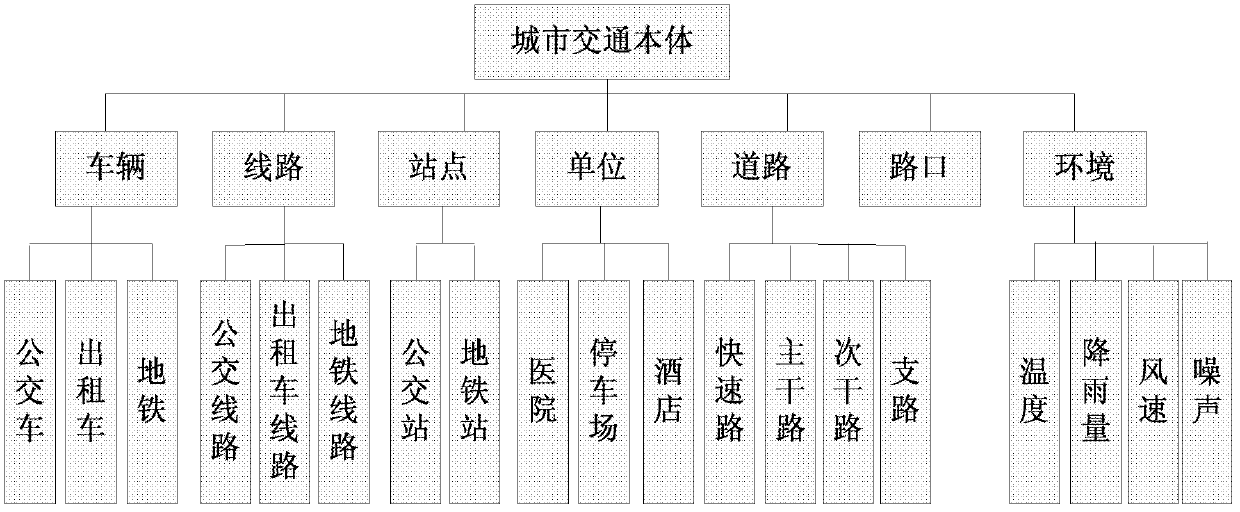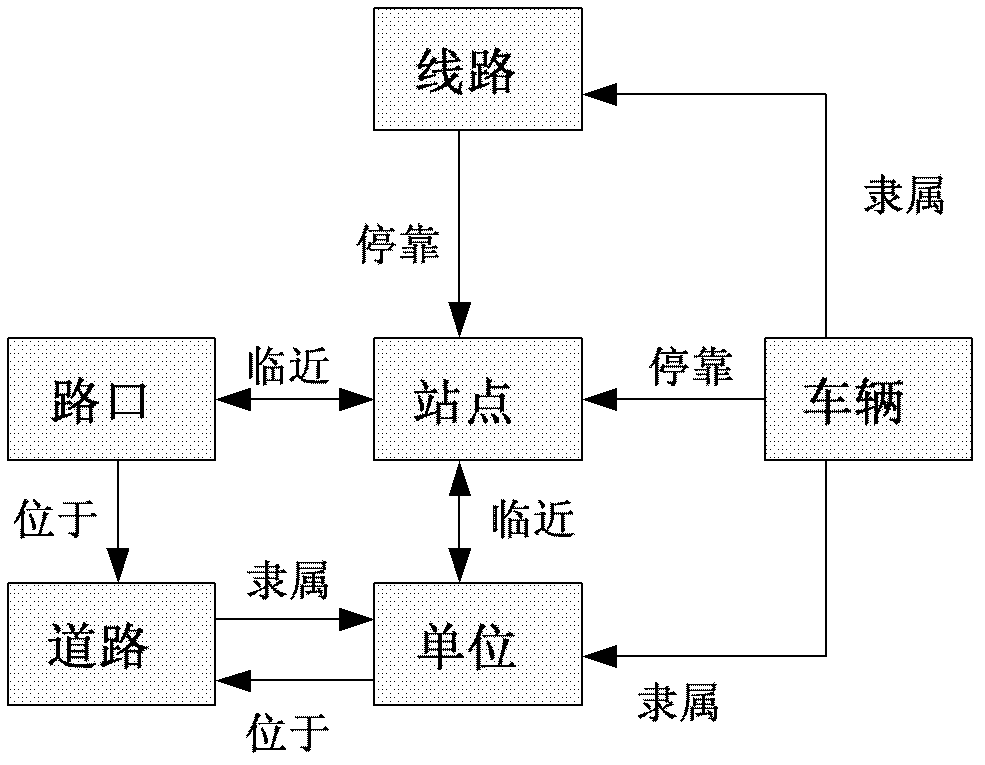Semantic sensor network system and semantic sensing method for urban intelligent transportation
A technology of urban transportation and sensors, applied in the field of traffic information, can solve the problems that concepts cannot be understood by machines, sensor data cannot be connected to the Internet, and heterogeneous sensors, heterogeneous data and information cannot be connected uniformly.
- Summary
- Abstract
- Description
- Claims
- Application Information
AI Technical Summary
Problems solved by technology
Method used
Image
Examples
Embodiment 1
[0040] Most of the sensor network applications in the field of urban transportation use ground sensor networks. Because the standards for building these sensor networks are not uniform, there is a lack of sharing mechanisms, and the collaboration is poor. Monitoring equipment in different areas often use products from different sensor manufacturers. Due to the inconsistency of sensor equipment, data collection, processing, storage methods, and communication protocols, sensor networks cannot share data and coordinate work, making these networks "islands" , it is difficult to interconnect them together to achieve the purpose of effectively allocating and sharing resources.
[0041] On the whole, the urban traffic information system is composed of a series of subsystems that are both relatively independent and cooperative. The full play of the overall benefits of the urban intelligent transportation system depends largely on the coordination and integration of these subsystems. ...
Embodiment 2
[0078] This embodiment is based on the first embodiment, taking the traffic flow of urban roads and the monitoring application of precipitation in the environment as an example, and further describes each layer and each module in the first embodiment.
[0079] Assuming that the user wants to know the best route to a certain place, the system in this embodiment is constructed in the following way in order to achieve this purpose:
[0080] Semantic sensing layer: through the sensor description language (SML), realize the unified and standardized description of the underlying sensors, including the sensor model, data frame format, manufacturer and other information, so that the machine can automatically identify these sensors, and then connect them to the protocol Conversion service module, which connects the sensor data to the Internet after the protocol conversion is completed. Through the sensor description service module of the semantic sensing layer, the standardized access ...
Embodiment 3
[0092] Image 6 It is a flowchart of the third method of the present invention. This embodiment discloses a semantic sensing method for urban intelligent traffic, which is used in a network system including sensors and databases; the method includes the following steps:
[0093] S601: Perform a standardized description on the sensor and the traffic information data acquired by the sensor to obtain standardized data;
[0094] S602: Perform protocol conversion, so that the normalized data under various protocols are input into the database through the Internet;
[0095] S603: Establish an urban traffic ontology, and establish a unified format for the data in the database through the urban traffic ontology;
[0096] S604: Publish the data in the database to provide information query service;
[0097] S605: Utilize the urban traffic ontology to analyze the query sentence input by the user and raise a data acquisition request to acquire specified data in the database;
[0098] ...
PUM
 Login to View More
Login to View More Abstract
Description
Claims
Application Information
 Login to View More
Login to View More - R&D Engineer
- R&D Manager
- IP Professional
- Industry Leading Data Capabilities
- Powerful AI technology
- Patent DNA Extraction
Browse by: Latest US Patents, China's latest patents, Technical Efficacy Thesaurus, Application Domain, Technology Topic, Popular Technical Reports.
© 2024 PatSnap. All rights reserved.Legal|Privacy policy|Modern Slavery Act Transparency Statement|Sitemap|About US| Contact US: help@patsnap.com










